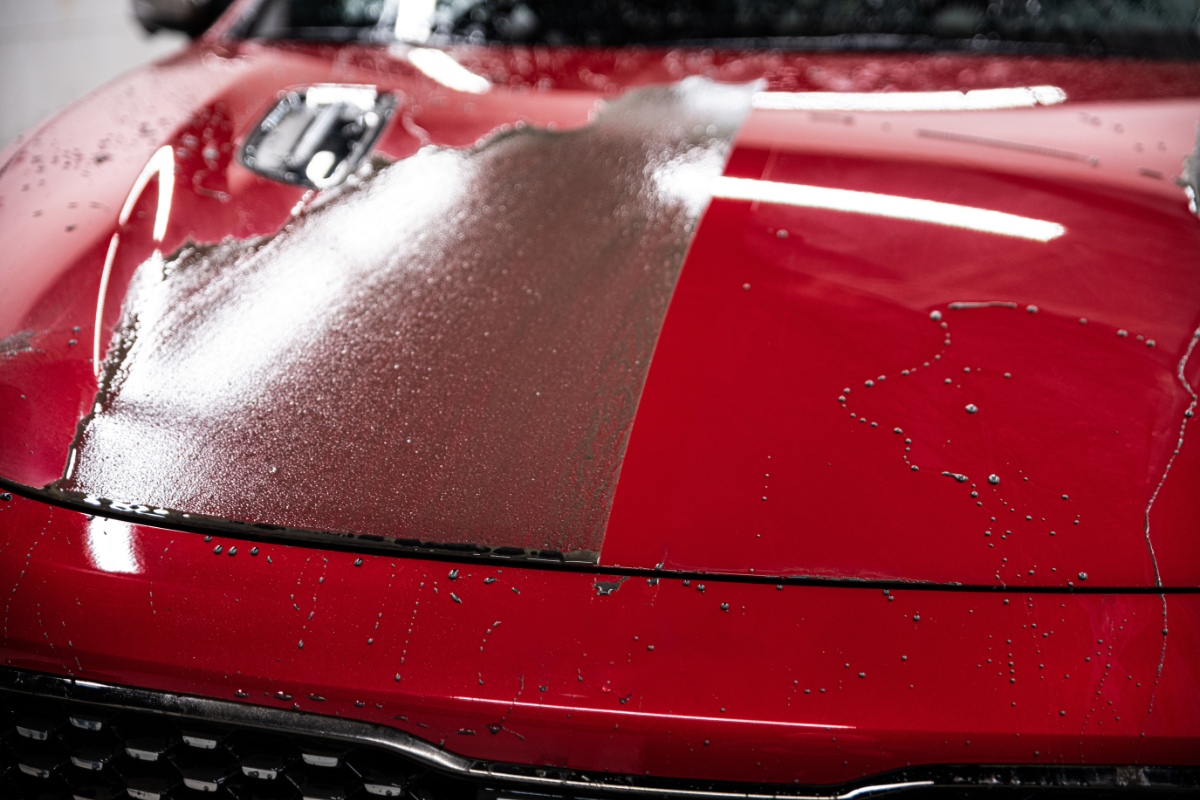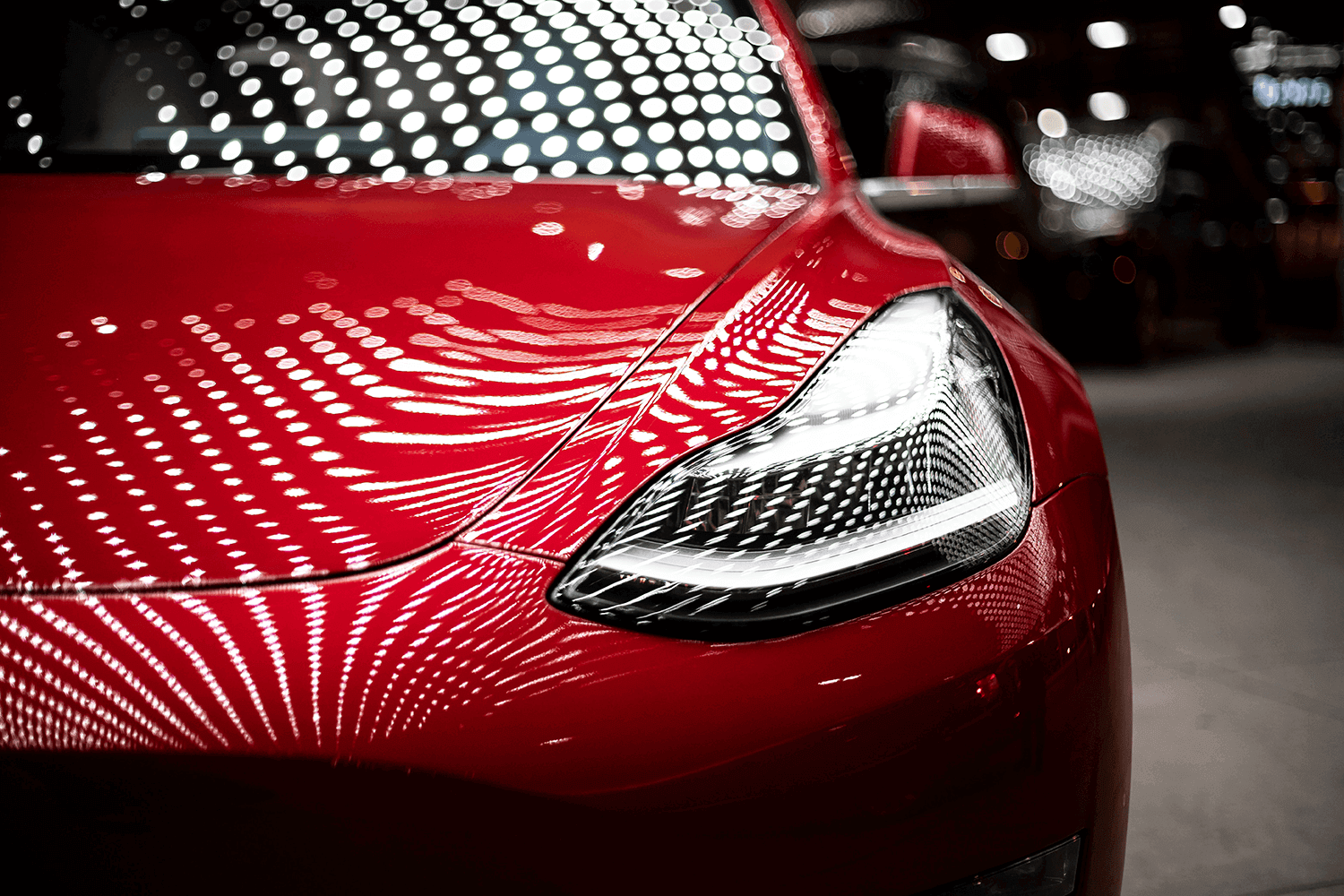Ceramic Layer vs. Typical Wax: Which Supplies Better Security?
The dispute in between ceramic covering and traditional wax for lorry protection is one that benefits cautious exam, especially in terms of toughness, resistance to environmental variables, and general upkeep needs. While ceramic layers guarantee prolonged long life and superior protection against a variety of threats, standard wax might attract those seeking a much more affordable, albeit temporary, service. As we explore the nuances of each choice, the ramifications of your selection could have long-term impacts on your car's appearance and upkeep regimen. What elements should influence your choice?
Overview of Ceramic Finishing
Ceramic covering has gained significant appeal amongst automobile fanatics and experts alike for its innovative protective qualities. This ingenious service contains a fluid polymer that chemically bonds to the vehicle's manufacturing facility paint, developing a durable layer of defense. Unlike traditional wax, which commonly lasts for a few weeks to months, ceramic layers can offer resilient defense for numerous years, depending on the product utilized and application approach.

While the preliminary expense of ceramic finishing might be higher than that of typical wax, the long-lasting benefits, consisting of toughness and reduced upkeep regularity, commonly warrant the investment. As automobile technology remains to develop, ceramic coverings have become a favored selection for those seeking optimum defense and long life for their lorries.
Introduction of Traditional Wax
The appeal of typical wax hinges on its simpleness and ease of usage, making it a favored selection amongst automobile proprietors seeking to enhance their vehicle's appearance and supply a standard degree of defense. Normally originated from natural carnauba or synthetic polymers, traditional wax forms a slim protective layer over the paintwork. The application procedure is simple, usually involving a basic rubbing with a microfiber cloth, making it obtainable to both newbie and knowledgeable customers.
Conventional wax items are readily available in different formulations, each developed to accommodate specific requirements, such as boosting luster or supplying water beading. The convenience of wax permits for usage on different surfaces, consisting of paint, glass, and even plastic trim. While the application can be done by hand or machine, the secret is to make certain a clean surface area for ideal attachment.
However, one notable quality of traditional wax is its fairly brief life-span compared to contemporary options. Typically using protection that lasts from a couple of weeks to a couple of months, regular reapplication is required to keep its performance. In spite of these restrictions, traditional wax remains a preferred option for vehicle fanatics who value the aesthetic enhancement it offers.
Trick Protection Functions
When considering paint protection for vehicles, it's important to understand the essential functions that differentiate standard wax from even more sophisticated options like ceramic finishings. One of the main protective qualities of ceramic coatings is their sturdiness. Unlike wax, which generally lasts a few weeks, ceramic coverings can sustain for a number of years, providing long-lasting security against ecological impurities.
Ceramic finishes develop a hydrophobic surface area, driving away water and avoiding dirt, gunk, and various other particles from adhering to the paint. This attribute not just boosts the automobile's appearance yet also lowers the regularity of cleaning. Furthermore, ceramic finishes use premium UV defense, protecting the paint from hazardous sun exposure that can cause fading and oxidation.
In comparison, conventional wax provides a more short-lived barrier against components but lacks the resistance to scratches and chemical stains that ceramic finishings provide. While wax can improve gloss, its protective abilities are limited, specifically against harsher environmental aspects such as bird droppings, tree sap, and road salt. In recap, the essential security attributes of ceramic coatings considerably beat those of conventional wax, making them an exceptional choice for durable car treatment.
Application Process Contrast

In contrast, the application of ceramic finishes is extra time-sensitive and complex, usually requiring specialist aid for optimum outcomes. The automobile's surface area weblink have to be diligently cleansed, sanitized, and polished to get rid of flaws prior to the finish is used.
Ultimately, the option in between wax and ceramic covering pivots not only on defense levels yet additionally on the time, competence, and sources offered for their corresponding applications. - ceramic coating
Expense Evaluation and Longevity
Cost plays a substantial function in the decision-making procedure between conventional waxes and ceramic layers. Ceramic layers generally regulate a higher in advance investment, ranging from $500 to $2,000 relying on the quality, brand, and specialist application solutions. This first expense can be connected to the sophisticated technology and materials utilized in ceramic formulas, which offer superior longevity and protection.
In comparison, traditional waxes are far more affordable, usually setting you back between $20 to $100 for do it yourself applications. The longevity of wax products is limited, commonly calling for reapplication every few months to keep their safety top qualities. This persisting expenditure can accumulate over time, making wax less economical in the lengthy run.
Ceramic layers, while more expensive originally, provide lasting results, typically surpassing two to five years with correct maintenance. This longevity can supply substantial cost savings in time, especially for car owners who prioritize protection and aesthetic conservation - ceramic coating. Ultimately, the selection between ceramic coverings and conventional waxes must take into consideration both preliminary prices and long-term worth, factoring in the maintenance demands and desired security level for the lorry
Verdict
In recap, ceramic layers supply superior security for automobile paint compared to conventional wax, offering improved durability, resistance to ecological elements, and hydrophobic properties. While the first investment for ceramic finishes is higher, their long life and lowered upkeep demands warrant the cost. Ultimately, for those looking for long-lasting vehicle treatment and protection, ceramic layers stand for a much more reliable solution than conventional wax, which supplies just short-term advantages.
The debate in between ceramic layer and standard wax for automobile protection is one that advantages cautious assessment, especially in terms of durability, resistance to environmental elements, and total upkeep demands.When thinking about paint security for lorries, it's vital to comprehend the key functions view it that identify typical wax from even more sophisticated alternatives like ceramic layers. In summary, the crucial defense functions of ceramic finishings considerably outshine those of standard wax, making them a superior option for lasting lorry care.
Eventually, the selection in between standard waxes and ceramic coverings must consider both first costs and lasting value, factoring in the upkeep requirements and link wanted protection level for the car.
In summary, ceramic finishings supply remarkable defense for automobile paint contrasted to conventional wax, offering enhanced sturdiness, resistance to ecological variables, and hydrophobic residential properties.